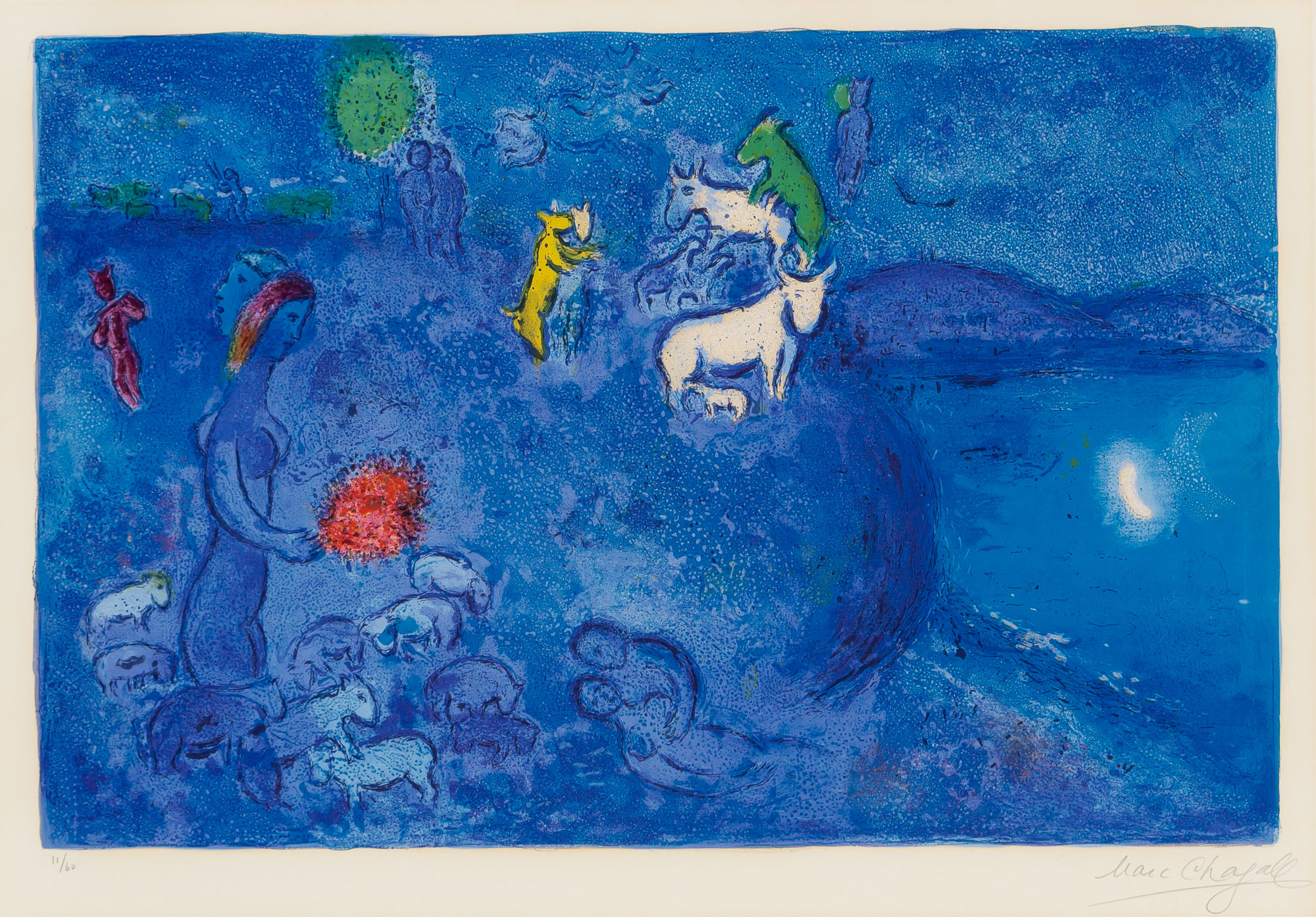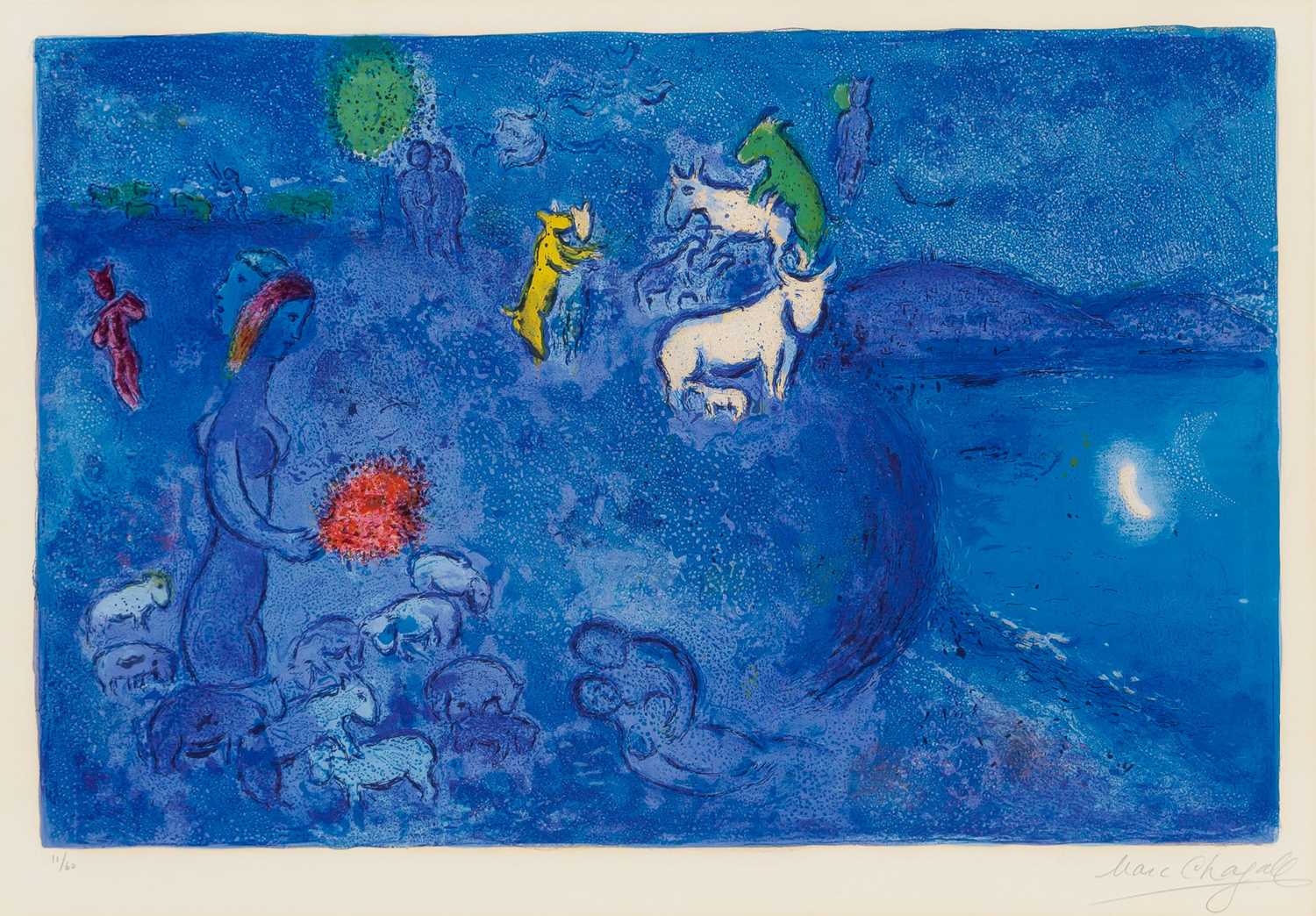
Marc Chagall
Russian/French, 1887-1985
Marc Chagall was a Russian French Jewish artist whose work combined personal history with elements of Cubism, Fauvism, and Surrealism. Born in what is now Belarus, Chagall created images rooted in village life, folklore, and memory, expressed through vivid color and a distinctive, dreamlike style. Deeply influenced by his Hasidic upbringing, he often imbued his compositions with spiritual symbolism and a sense of longing tied to his early years.
After moving to Paris in 1910, Chagall connected with the city’s modernist circles but maintained a unique individual voice. While others leaned into abstraction, Chagall remained committed to figurative storytelling, layering his work with personal mythology and expressive, nonlinear narrative. His paintings often featured floating figures, animals, and symbolic scenes that reflected his cultural background and imaginative vision. Chagall was also influenced by theatre, designing sets and costumes for the Jewish Theatre in Moscow and later for productions like The Magic Flute at the Metropolitan Opera in New York. This theatrical influence can be seen in the scale and composition of much of his work.
He worked across media, painting, printmaking, stained glass, and illustration, while maintaining a consistent focus on storytelling and emotion. Today, his work is featured in major museums and collections worldwide and continues to resonate with those drawn to modernist art and narrative imagery.





